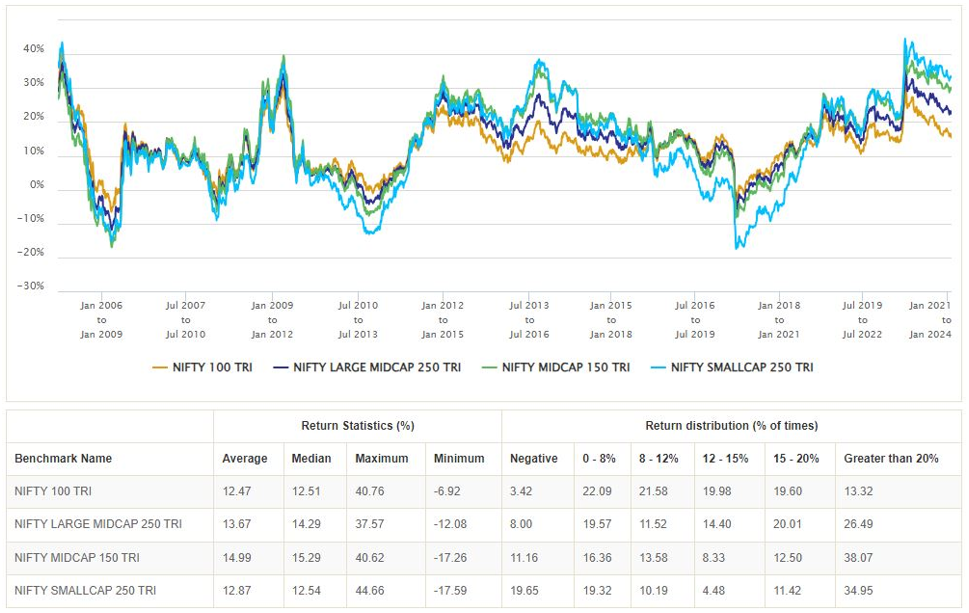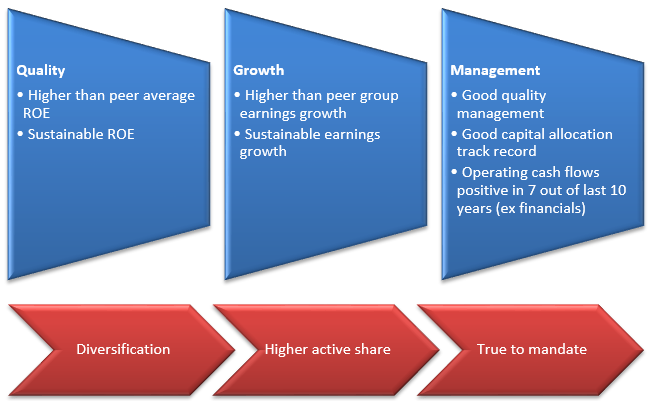PGIM India Large and Midcap Fund: Should you invest in this NFO

(Large and Mid Cap Fund - An open ended equity scheme investing in both large cap and mid cap stocks.)
PGIM MF has announced the launch of PGIM India Large and Midcap Fund. The NFO will open for subscription on 24th January 2024. The large and midcap funds category has seen phenomenal growth in assets under management (AUM) from ~41,000 crores in 2018 to ~1,88,000 crores in 2023 growth of 30% compounded annual growth rate (CAGR) since 2018 (source: AMFI, as on 31st December 2023). In this article we will dive into PGIM India large and midcap fund NFO.
What are large and midcap funds?
As per SEBI regulations, large and midcap fund must have minimum 35% allocation in large cap stocks (top 100 stocks by market capitalization) and 35% allocation in midcap stocks (101st to 250th stocks by market capitalization). While the minimum large cap allocation potentially provides a degree of stability in volatile market conditions, the mandate for these funds provides enough flexibility to fund managers to position their portfolios for long term capital appreciation by identifying investment opportunities across different market cap segments and various different sectors.
Why invest in large and midcap funds?
- Large and midcap funds provide the right balance between risk and returns. These funds can provide decent returns without significant additional risk (see the chart below). On a risk-adjusted basis, large and midcap funds can be a viable option for long term investors

Source: PGIM India MF, Data for period: 01/04/2005 to 29/12/2023. Disclaimer: Past performance may or may not be sustained in the future.
- Historically, Large and midcaps have decent participation in market upcycle and at the same time, has also relatively provided downside protection (see the chart below) across market cycles.

Source: Advisorkhoj Research, Data for period: 01/04/2005 to 29/12/2023. Disclaimer: Past performance may or may not be sustained in the future.
- Winners do rotate across market cap segments (see the chart below). It is difficult for investors to anticipate which and when market cap segment will outperform. Large and midcap funds automate market cap based asset allocation decision for the investor.

Source: Advisorkhoj Research, Data for period: 01/01/2014 to 29/12/2023. Disclaimer: Past performance may or may not be sustained in the future.
- Large cap indices like Nifty 100 has a heavier tilt towards certain sectors like BFSI, IT, Oil and Gas, FMCG. Large and midcaps provide relatively more balanced exposure across different industry sectors, both established and new age sectors.
- Large and midcaps provide exposure to sectors where large caps where have no presence e.g. textiles, media and entertainment etc. investors can get diversification benefits across various sectors through large and midcap funds.
- Both large caps and midcaps can play an important role in the India Growth Story. Indian large cap companies have considerable growth potential as our economy grows. Even the largest companies in India are relatively smaller than the largest companies on a global scale, indicating room for expansion and growth, as Indian economy expands
- Beyond large caps, sectors with significant midcap presence can benefit from India’s consumption driven economic growth, rising per capita income, changing global supply chain landscape (e.g. China+1), Government’s policies e.g. import substitution (Make in India), digitization, infrastructure spending, shift from unorganized to organized sectors etc. Large and midcap funds can provide investors exposure to a broader range of investment opportunities in the above mentioned themes.
- There is a scope for large and midcap fund managers to create alpha by taking positions (overweight / underweight) in a particular market cap segment or sector as per the fund manager’s views
PGIM India Large and Midcap Fund – Stock Selection Principles

Who should invest in PGIM India Large and Midcap Fund?
- Investors looking for capital appreciation and wealth creation.
- Investors should have at least 5 year investment horizon in this scheme.
- This fund can be suitable for new or first time investors
- Investors with very high risk appetite.
- Investors can invest in this scheme either through lump sum or SIP depending on your investment needs.
In conclusion - Why invest in PGIM India Large and Midcap Fund?
- Historically, large & Midcap has provided above average risk-adjusted returns as compared to large caps
- Large & Midcaps provide the combination of stability through large caps and growth through midcaps
- Large & Midcaps category provides fair exposure to both established sectors as well as balanced exposure to promising or new age sectors
- Fund manager can overweight/underweight large, and midcaps based on his views. There is scope for alpha creation through active management
- DIY Investors may face tax & added cost implications by rebalancing the portfolio or shifting across market caps themselves. PGIM India Large and Midcap Fund is an efficient way to participate in large and midcaps
Investors should consult with their financial advisors if PGIM India Large and Midcap Fund is suitable for their investment needs.
Mutual Fund Investments are subject to market risk, read all scheme related documents carefully.
PGIM is the global investment management business of Prudential Financial, Inc. (PFI) USA, with USD 1.5 trillion1 in assets under management. We offer a broad range of investment capabilities through our multi-manager model along with experienced investment teams that assist you in achieving your financial goals. With a glorious legacy of 145 years, PGIM is built on the strength, stability and deep expertise in managing money. We offer you a long-term perspective, having weathered multiple market cycles, and see opportunity in periods of disruption.
Investor Centre
Follow PGIM India MF
More About PGIM India MF
POST A QUERY










